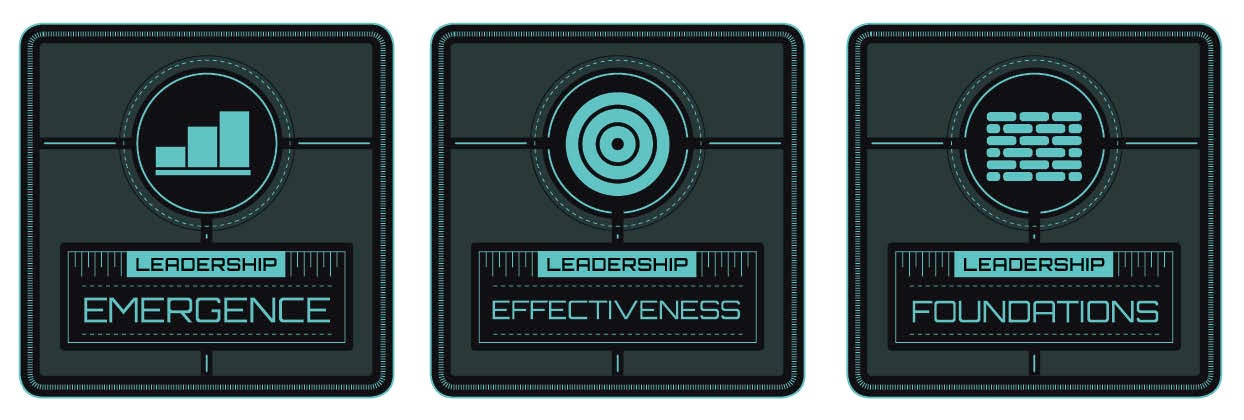
DR TOMAS CHAMORRO-PREMUZIC CHIEF EXECUTIVE OF HOGAN ASSESSMENTS AND PROFESSOR OF BUSINESS PSYCHOLOGY AT UNIVERSITY COLLEGE LONDON AND COLUMBIA UNIVERSITY
One of the biggest challenges organisations face today is to identify the next generation of leaders. There is a wealth of tools and technologies out there to help them accomplish this, but mainstream practices are barely leveraging the science of talent identification.
All too often, when we ask business leaders how they know if someone has potential or talent for leadership, the most common answers are “Well, you just know” or “I know it when I see it”. While there are clearly some highly intuitive people, who are capable of spotting true potential by following their instincts, most people are less intuitive than they think, which causes two big problems.
The first is that the wrong people get selected or promoted into leadership positions. This happens in every organisation, including companies that invest a great deal of money in talent management.
The second is that the right people – those who should actually lead – get overlooked. Although these individuals possess many of the critical qualities that underpin leadership talent, for example good judgment, humility and the ability to build high-performing teams, they are generally less focused on self-promotion, networking and political manoeuvring. The result is a paradoxical system where the drivers of leadership emergence are not just different, but often the opposite of the drivers of leadership effectiveness. What gets you there won’t make you effective; what makes you effective won’t get you there.
The challenge for businesses is clear. It is to end up with more true positives and less false positives, as well as increasing the true negatives while reducing the false negatives. Although there is no single recipe for achieving this, transitioning from intuitive to scientific talent identification will do the trick and have a big return on investment. But it will require a more rigorous and comprehensive examination of human potential, understanding not only its bright side, but also its dark side.

MORE TO POTENTIAL THAN STRENGTHS
Influenced by the positive psychology paradigm, a popular American movement that promotes the focus on strengths and desirable qualities at the expense of ignoring people’s weaknesses, euphemistically labelled “opportunities”, contemporary talent identification practices tend to overlook candidates’ dysfunctional tendencies.
This leads to an inability to predict derailment, as well as inadequate development interventions to capitalise on employees’ talents while keeping their “toxic assets” in check. Importantly, the most commonly used methods for identifying leadership potential, such as interviews and supervisory ratings, are far less effective for identifying dark-side than bright-side personality traits. For example, psychopathic and narcissistic individuals tend to perform well on selection interviews, and they are often described as charming and charismatic by their supervisors. Scientific personality assessments are immune to these manipulation tactics so they highlight the true risks associated with such candidates.
Needless to say, human resources also needs business leaders to understand the dangers of bringing the wrong people into senior roles. It is not uncommon for talent management practitioners to use the right criteria and the right method, only to have their candidates vetoed by the executive team. The most highly functioning HR departments we have worked with don’t necessarily stand out because of their expertise, but because of their ability to influence the board and the C-suite. Having a state-of-the-art talent management function is not enough; senior leaders must trust their HR director, particularly when it comes to people problems.
Psychopathic and narcissistic individuals tend to perform well on selection interviews, and they are often described as charming and charismatic by their supervisors
MEASURING LEADERSHIP POTENTIAL
At Hogan, we are committed to creating the most accurate and scientifically advanced assessment tools in the world. Our methods and tools are endorsed by the independent academic community and align with state-of-the-art research in the field. In fact, we pioneered the application of psychometric assessments to the workplace, simultaneously advancing practice and scientific research in the field. The validity of our methods is not described in self-published white papers, but in more than 300 academic journal articles reviewed by real experts.
Perhaps more importantly, our tools don’t just predict performance, they also explain it. The current obsession with big data and predictive analytics is a welcome upgrade from intuition and subjectivity, yet as Immanuel Kant noted, data without theory is blind, much like theory without data is just mental speculation.
Our tools are based on the science of personality, a 100-year-old branch of organisational psychology that provides the most comprehensive and granular understanding of a person. Emerging methods of assessment are interesting, but they are a long way off demonstrating incremental validity over scientific tools. Rather than being distracted by shiny new objects, organisations would do well to apply the more robust methods that have been tested and validated by the independent scientific community for decades.
The new Hogan High-Potential Talent assessment is designed to provide organisations with an in-depth picture of employees’ career and leadership potential. It evaluates individuals’ ability to move up in the organisation, to emerge as leaders and to lead effectively once they emerge.
This scientific assessment, which takes 40 minutes to complete, condenses 30 years of expertise and more than five million personality evaluations of employees, managers and leaders in over 50 countries. Rather than reducing potential to a single score or personality profile, the assessment produces a detailed report highlighting candidates’ strengths and weaknesses, and how they can best develop their potential.
Our premise is simple: who you are determines how you lead. And if you are placed in the right role, your personal style and values will become an important career and organisational weapon – because talent is personality in the right place.
To find out more about how Hogan Assessments can help your business, visit www.hoganassessments.com
For more about the Hogan High-Potential Talent assessment, visit www.hoganhipo.com


